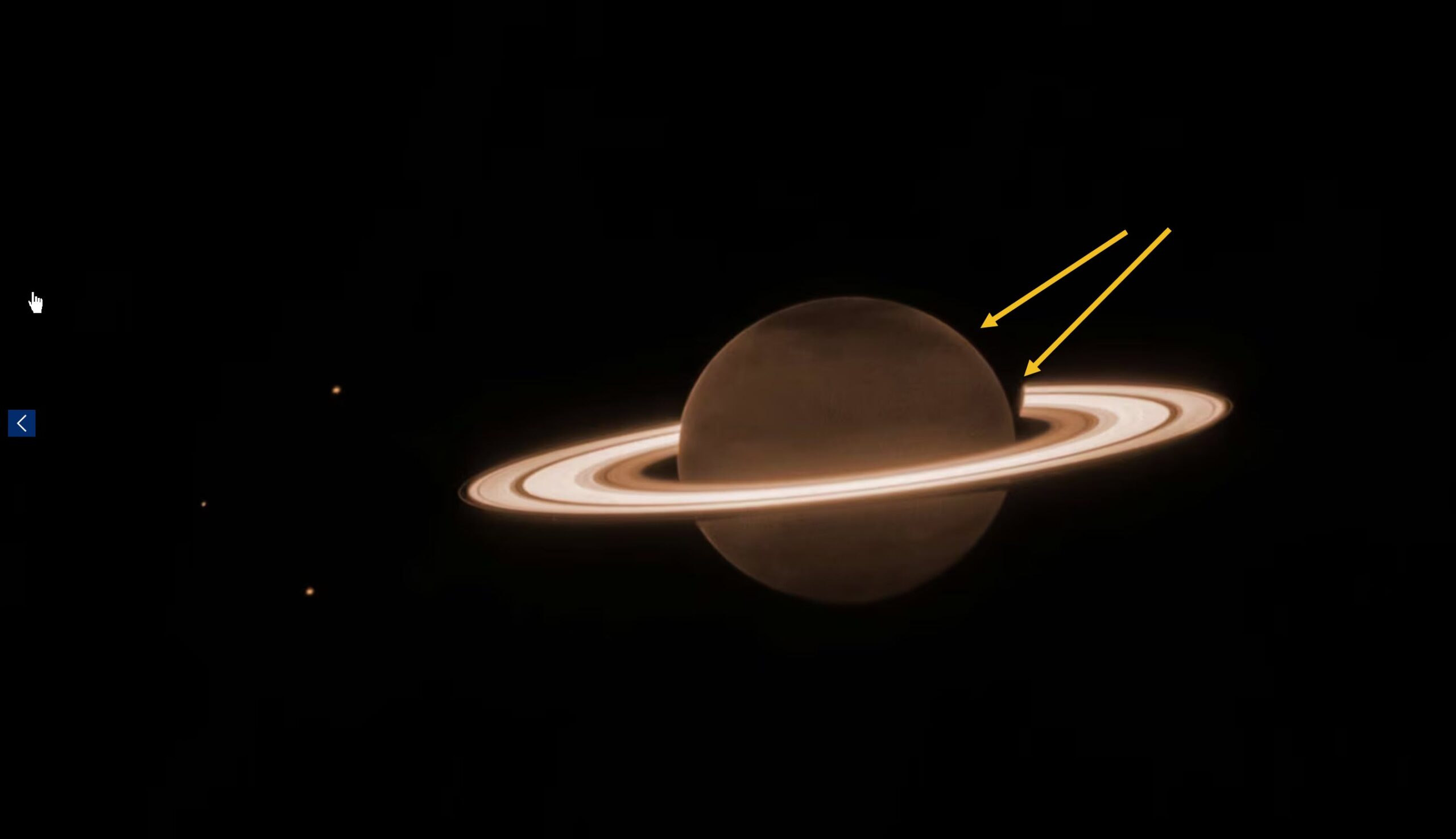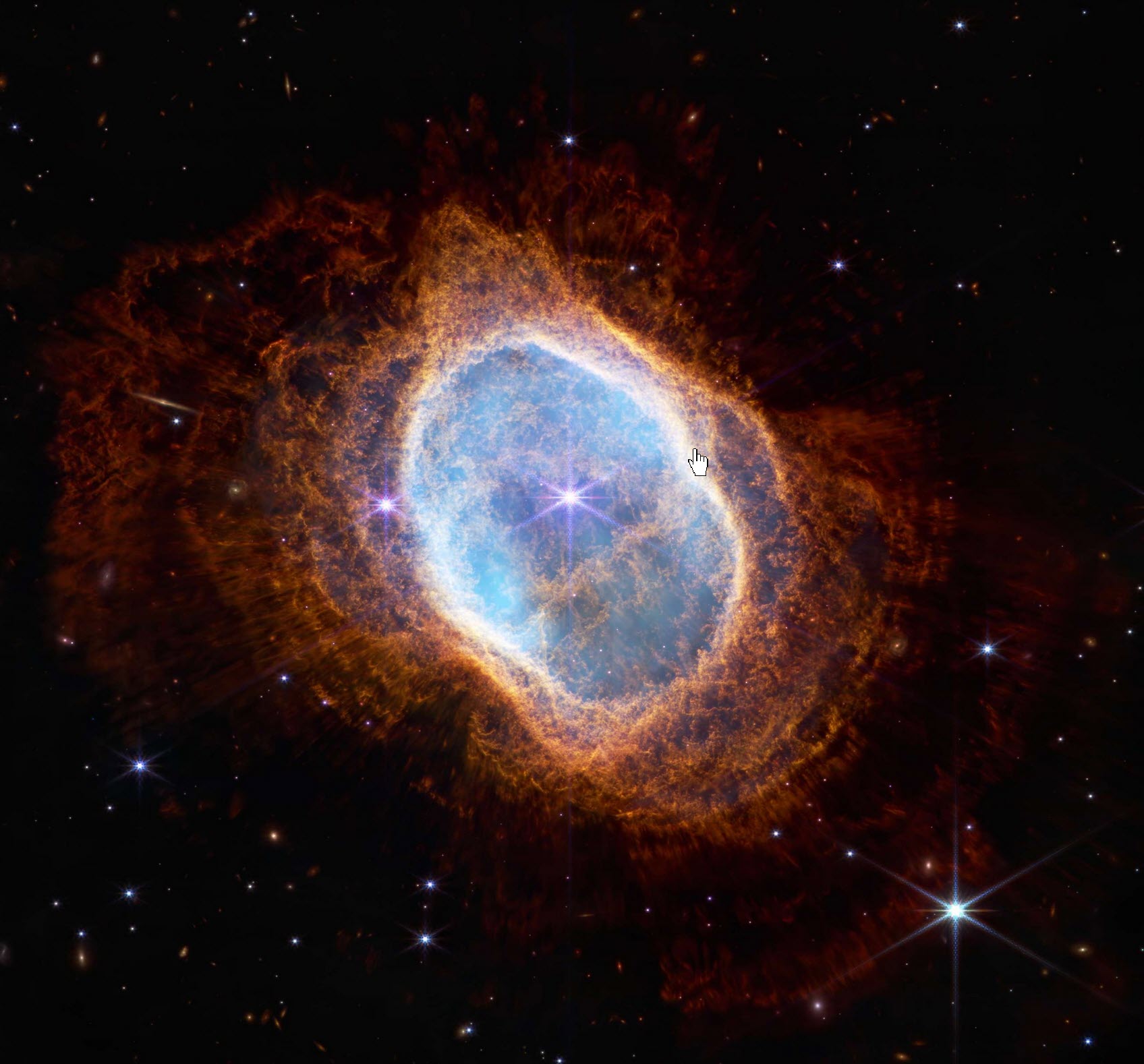
The James Webb Space Telescope captures two stars in the Southern Ring planetary nebula that are a dying star expelling gas and dust in orbit with a younger star that is helping to change the shape of this nebula’s intricate rings in an image released July 12, 2022. Despite “planet” in the name, which comes from how these objects first appeared to astronomers observing them hundreds of years ago, these are shells of dust and gas shed by dying sun-like stars. The nebula is shaped like an irregular oval, with reddish orange plumes of gas and dust.
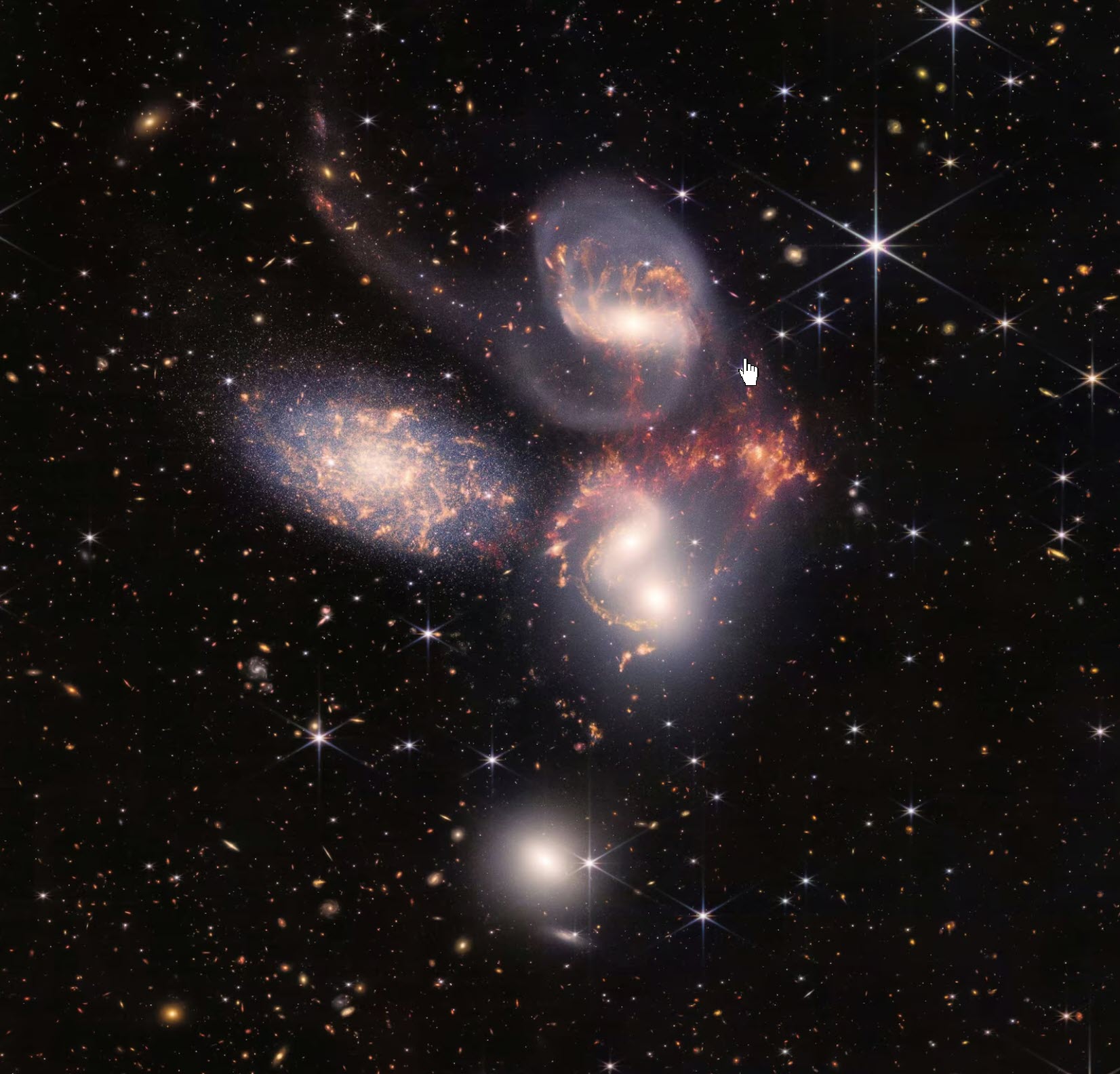
Below, they are so convinced of their “early universe”. It seems odd for this concept to be almost “universally” accepted.
:In the first James Webb Space Telescope image to be released July 11, 2022, the deepest and sharpest infrared image of the early universe was taken in less than one day. Similar images from the Hubble Telescope have taken multiple weeks to produce. The background of space is black as thousands of galaxies appear with their shapes and colors varying. These galaxies are part of the galaxy cluster SMACS 0723 and are warping the appearances of galaxies seen around them”
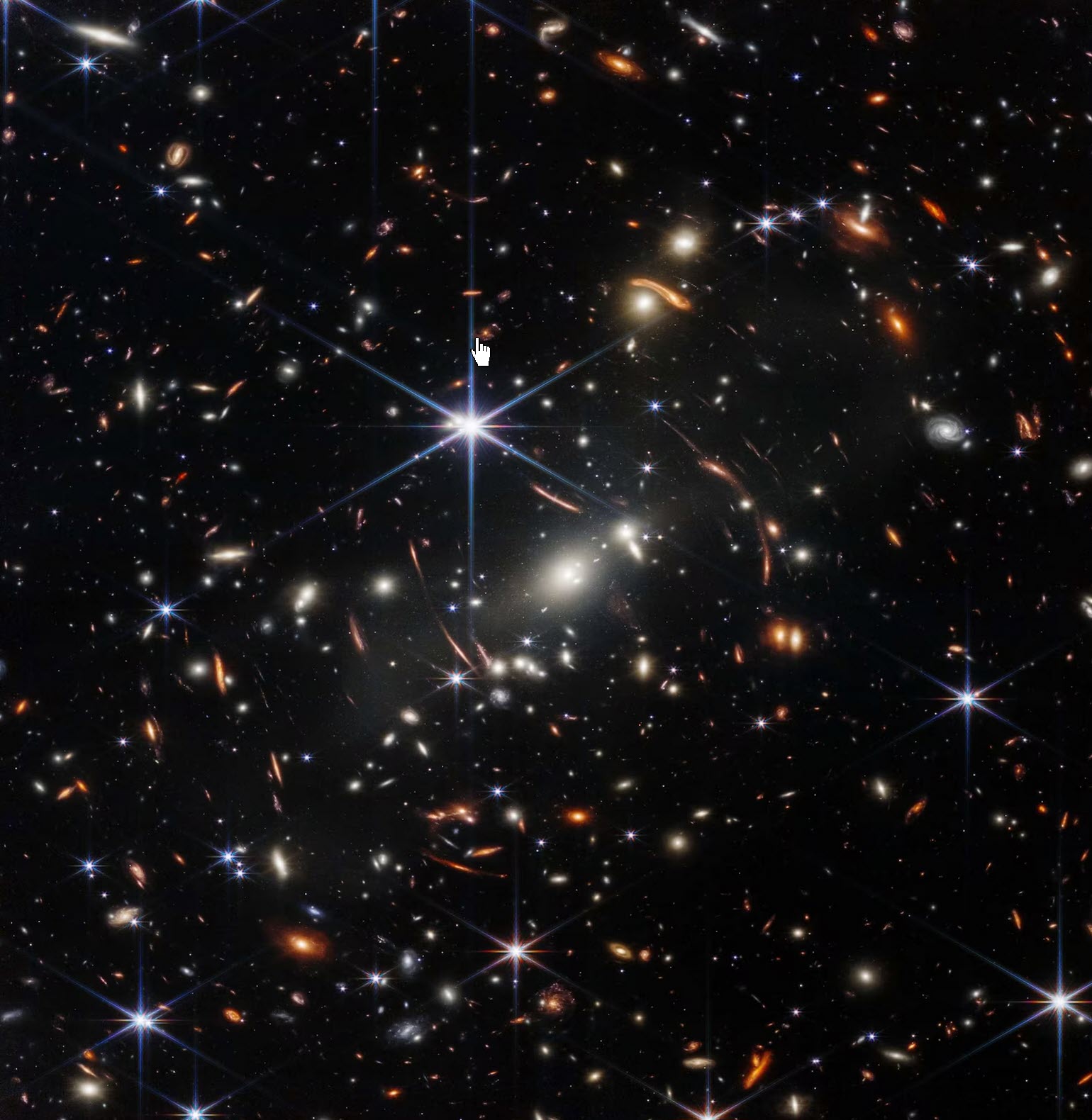
The Cartwheel and its companion galaxies are a composite from James Webb Space Telescope’s Near-Infrared Camera and Mid-Infrared Instrument, released Aug. 2, 2022, which reveals details that are difficult to see in individual images alone. This galaxy formed as the result of a high-speed collision that occurred about 400 million years ago. The Cartwheel is composed of two rings, a bright inner ring, and a colorful outer ring. Both rings expand outward from the center of the collision, like shockwaves.

Messier 74, Below
otherwise known as the Phantom Galaxy. The telescope has revealed gray filaments forming a spiral pattern winding outward from the center of the galaxy. These spiral arms of the galaxy are traced by blue and pink and represent regions in which stars are forming. The very heart of the galaxy is colored blue and has speckles, which are young stars that are forming around the nucleus of the galaxy.
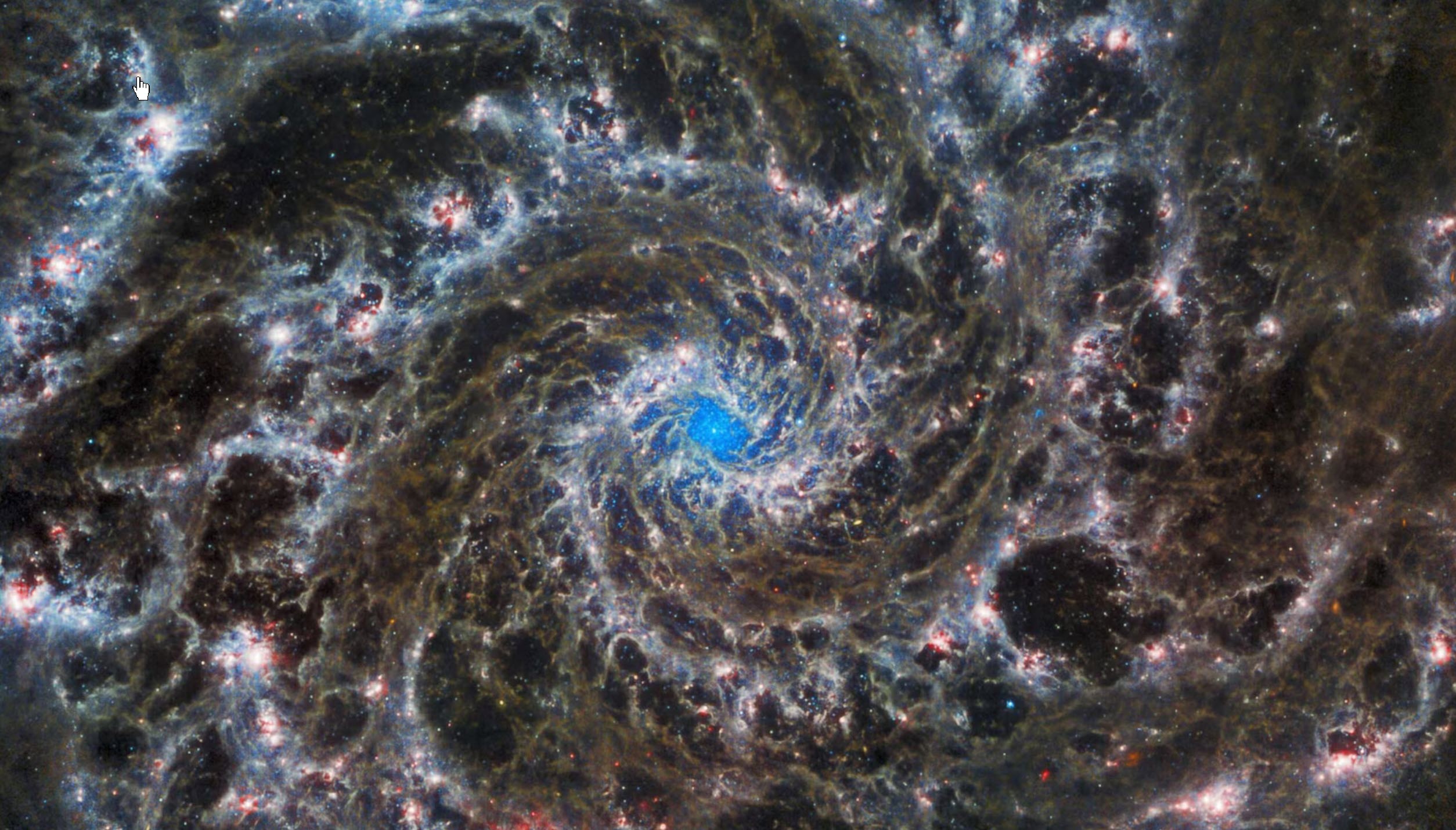
A space image captured by the James Webb Space Telescope reveals details of thousands of never-before-seen young stars in the Tarantula Nebula in an image released Sept. 6, 2022. The center of this image, taken by Webb’s Near-Infrared Camera, has been hollowed out by the radiation from young, massive stars seen in pale blue. Only the densest surrounding areas of the nebula resist erosion, forming the pillars that appear to point back toward the cluster of stars in the center. The pillars are home to still-forming stars, which will eventually leave their cocoons and help shape the nebula
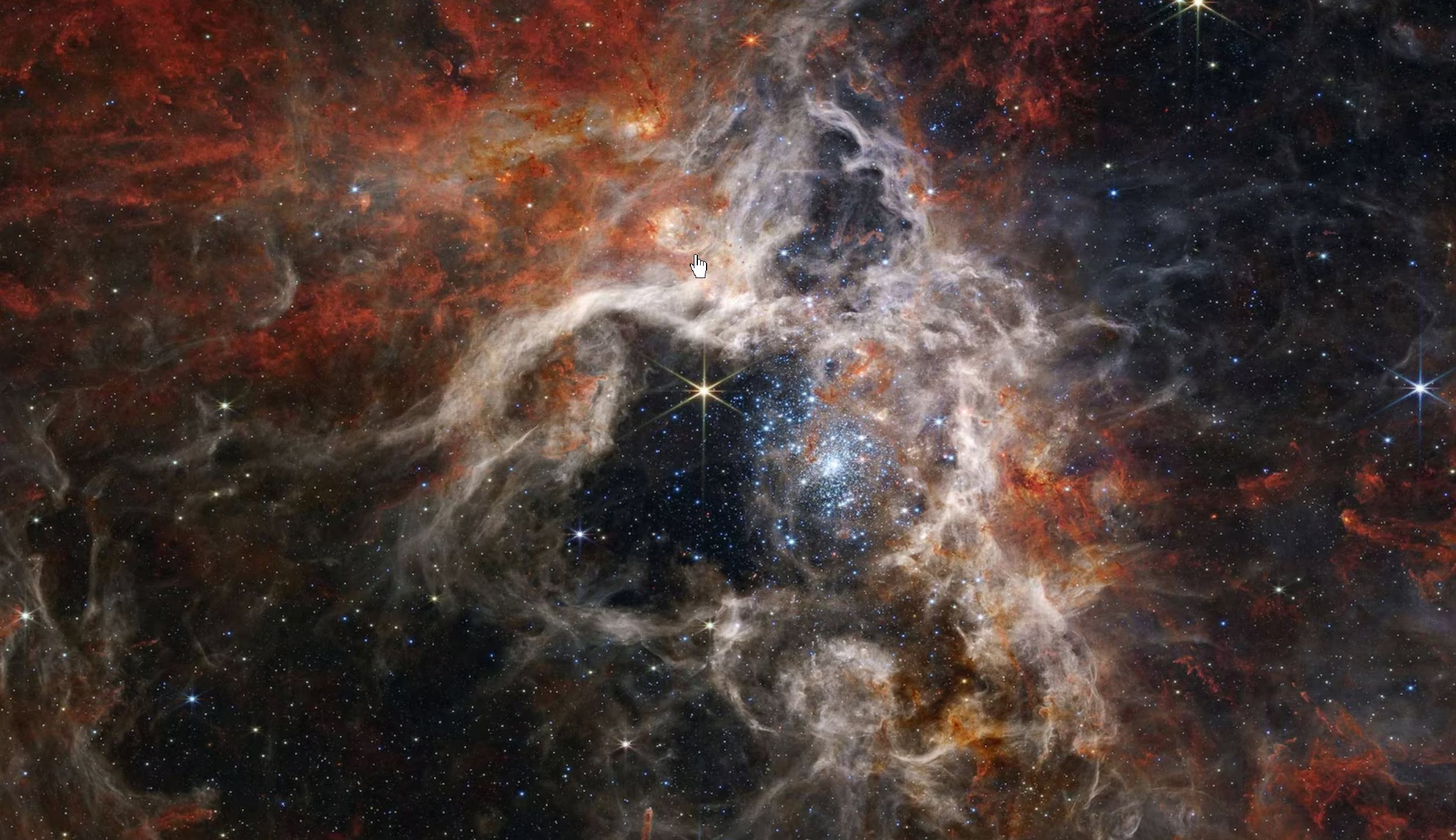
Curious, in this description from NASA, they ignore the elephant in the room, which I Arrow
The James Webb Space Telescope has captured the clearest view of planet Neptune’s rings in more than 30 years, revealing the ice giant in a new light with an image released, Sept. 21, 2022. Most striking about the image is the crisp view of the planet’s dynamic rings. This first image from the telescope of Neptune reveals several key features of the ice giant’s atmosphere only visible in the infrared spectrum. Most prominent in the image are a series of bright patches representing methane ice clouds. These clouds are high in the atmosphere and reflect the sun’s bright light.
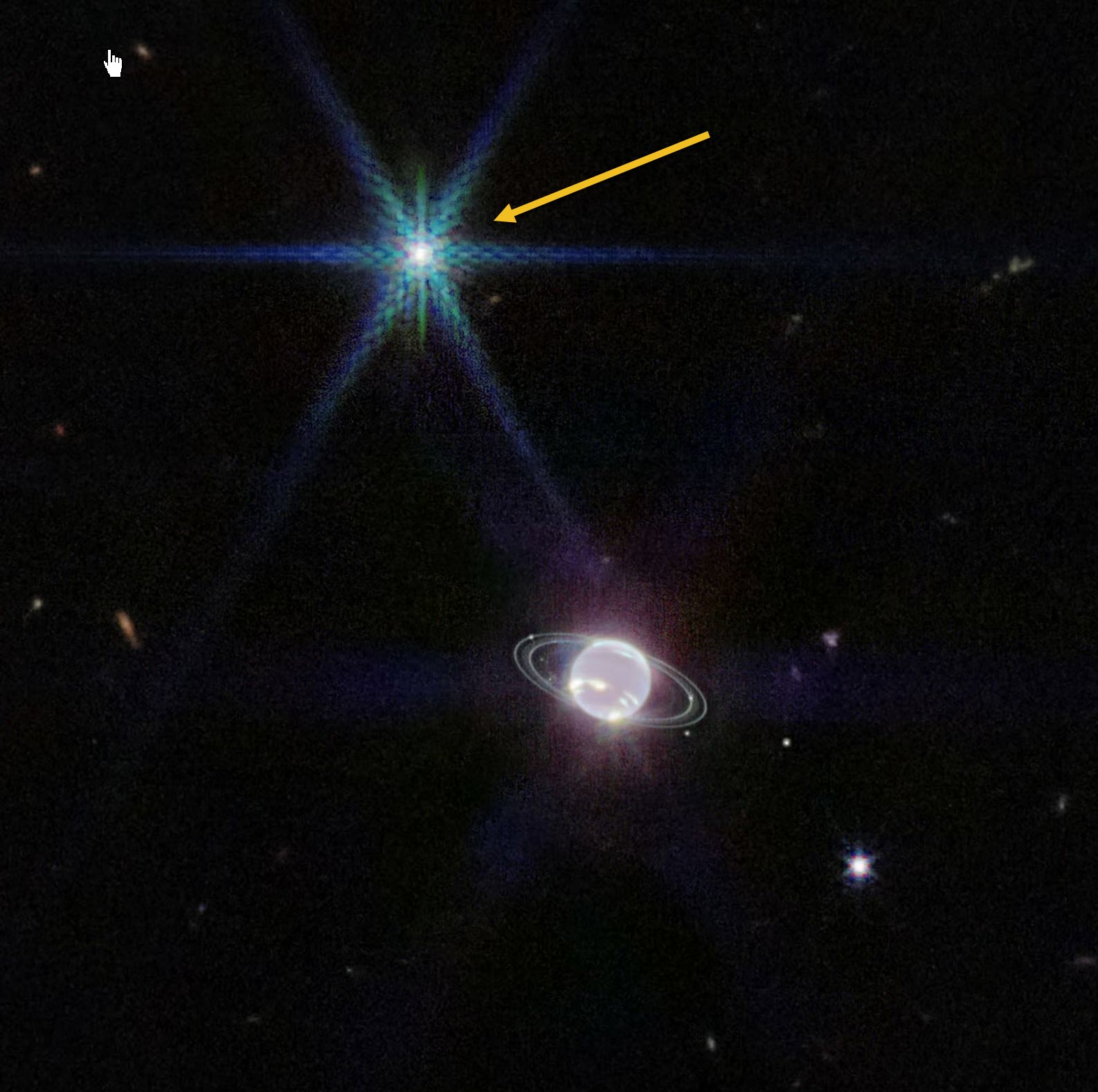
A bright dot at the center of a star-filled black space is seen in this James Webb Space Telescope image, released Oct. 12, 2022. The bright dot is actually two stars meeting, which happens every eight years. Under the right conditions, this collision of streaming gas can form a new ring of dust. Webb reveals 15 of the 17 rings seen here for the first time. This star pair known as Wolf-Rayet 140 generate powerful winds that push huge amounts of gas into space.
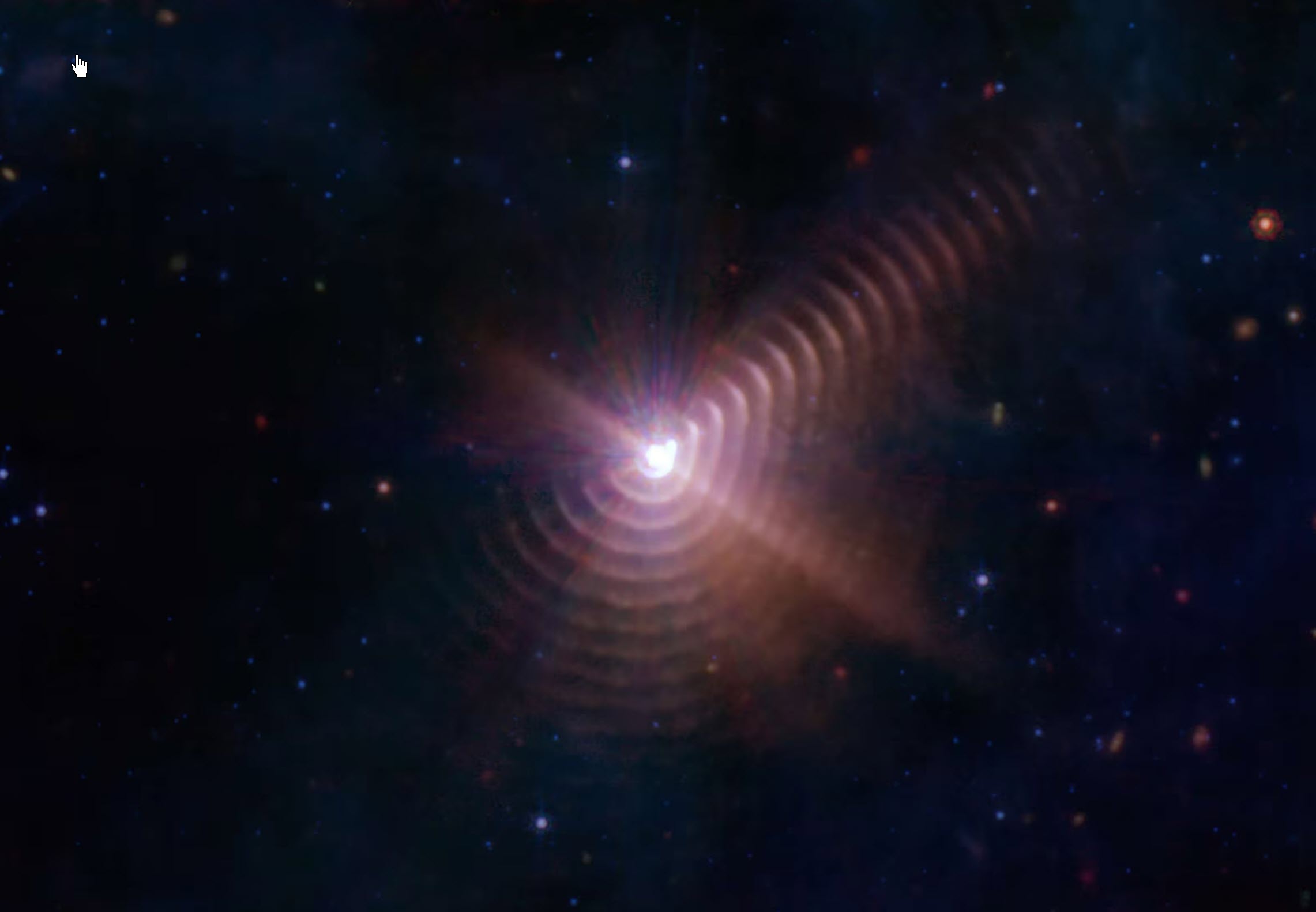
Below is the classic “Pillars of Creation”
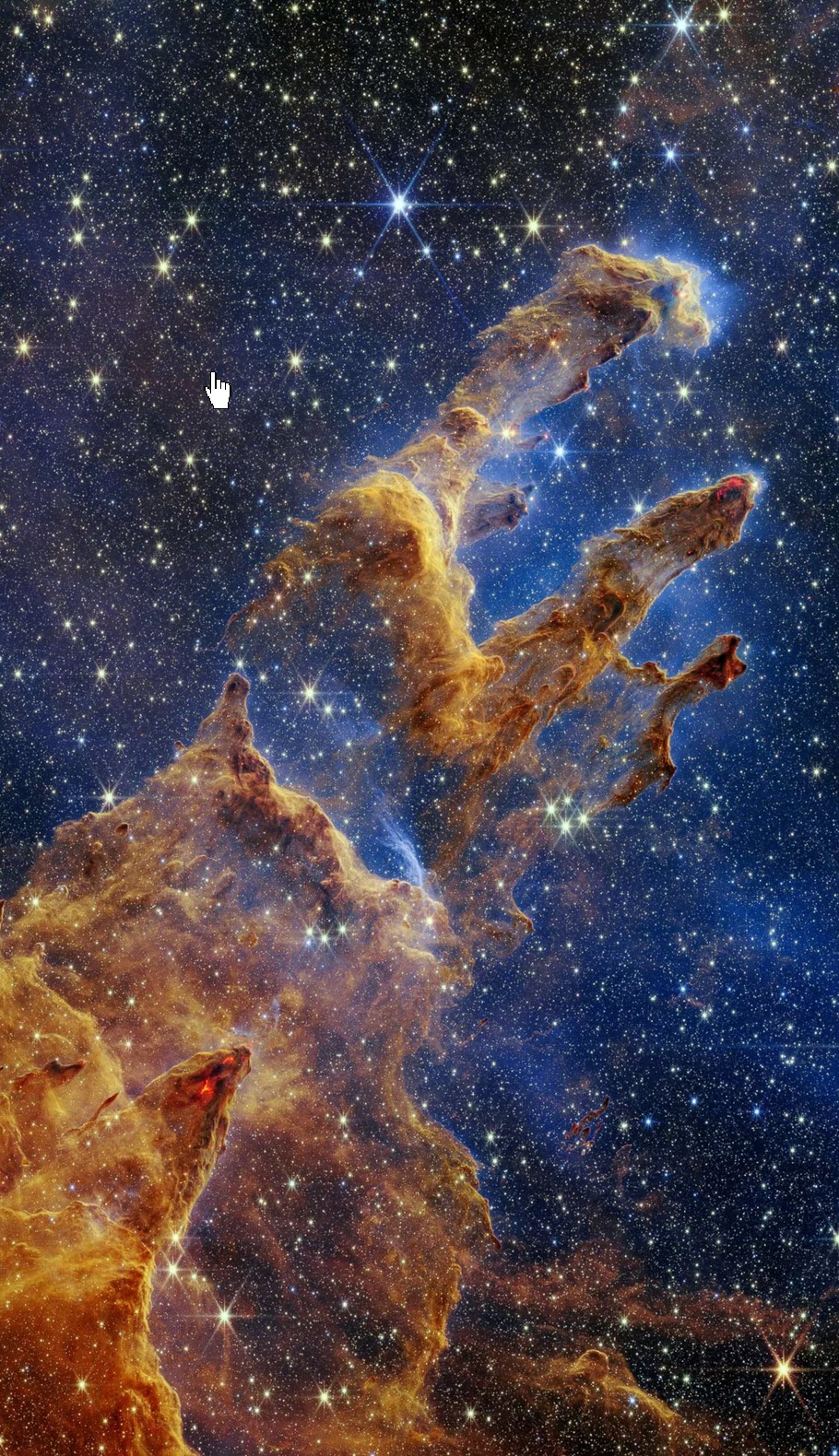
Again, they ignore the elephant in the room.
The James Webb Space Telescope took its first near-infrared look at Saturn on June 25, 2023. The planet appears extremely dark as methane gas in its atmosphere absorbs sunlight, but its rings stay bright. Three of Saturn’s moons — Dione, Enceladus and Tethys — are visible to the left of the planet. Saturn’s rings are made up of an array of rocky and icy fragments with the particles ranging in size from smaller than a grain of sand to a few as large as mountains on Earth.
